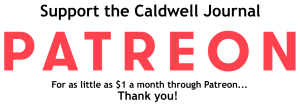Controlled burns planned for Tuesday, March 12 in Pisgah National Forest
The U.S. Forest Service will burn to reduce fuels, improve forest health on Pisgah and Grandfather Ranger Districts
ASHEVILLE, NC (March 11, 2024) ⇒ The U.S. Forest Service is planning to conduct two controlled burns today in Pisgah National Forest. The goals for the burns are to reduce potential wildfire fuels that have built up on the forest floor and improve forest health by supporting native, fire-adapted species. Details about each burn unit and any trail or road closures are included below:
Pilot Mountain, Pisgah Ranger District – a 1300-acre burn unit in Transylvania County. The Art Loeb Trail #146 will be temporarily closed from the Blue Ridge Parkway to Gloucester Gap. Forest Service Roads (FSR) 5003, Indian Creek and 229 Pilot Mountain Road will also be closed during burn operations. Use caution in the area of FSR 475, Davidson River Road from the Daniel Ridge Trailhead to Shoal Creek Road as there is potential for smoke and wildland firefighters in the area.
Dobson Knob, Grandfather Ranger District – a 2300-acre burn unit in Burke County, near the McDowell County line. Located approximately 5.5 miles north of Nebo, NC and 2.5 miles east of North Cove, NC.
The date and time of each burn and the actual number of acres may change based on fuel and weather conditions. Helicopters may be used to assist burn operations. Drone/UAV use is not permitted during burn operations.
We ask that anyone near the burn units pay attention to posted signs and watch carefully for wildland firefighters and personnel working in the area. We will monitor wind speed and direction to try and limit smoke impacts on nearby communities, but please be aware of any smoke in the area.
Why controlled burns/prescribed fire?
Fire is a natural part of our forests in North Carolina. Prescribed fires, also known as controlled burns, are an important tool for maintaining that natural process and reducing fuels that build up on the forest floor, while ensuring public and firefighter safety.
How does the USFS plan for a burn?
All controlled burns are thoroughly planned and analyzed by a team of specialists to ensure that wildlife, fisheries, rare plants, and historic sites are not harmed. They use information from decades of fire science research to write controlled burn plans, which are also known as a “prescription”, to improve forest health.
Who participates in a burn? What do they look for?
Wildland firefighters and fire management teams that respond to wildfires are the same people that plan and carefully set controlled burns. They go through extensive training to ensure firefighter and public safety, reduce the impacts of smoke on nearby communities, and set the burns so that they improve forest conditions. Fire managers consider wind speed/direction, relative humidity, conditions on the forest floor, and other factors before and during a burn. They plan for these fires to move slowly and at a low intensity so that they reduce wildfire fuels and allow wildlife to either escape the area or find a refuge and avoid injury. (Often, animals like turkey and deer move in quickly after a burn to take advantage of the newly opened areas and easy to find food sources.) After a burn, fire managers will monitor the area and analyze the effects of the burn.
For more information on how the U.S. Forest Service uses prescribed fire, visit https://www.fs.usda.gov/managing-land/prescribed-fire.
For more information, visit www.fs.usda.gov/nfsnc or follow the National Forests in North Carolina on Facebook (www.facebook.com/nfsnc).

